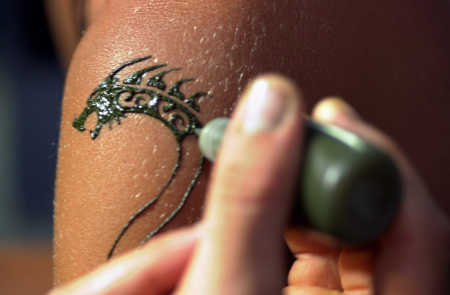Risk of Henna Tattoos
As students hit Florida’s beaches for spring break, the Hernando
County Health Department wants everyone to be aware of health risks
associated with temporary “black henna” tattoos, which have become
popular in recent years because they look like real tattoos.
The
danger of “black henna” tattoos is that the black color often is a
result of the addition of black hair dye, which may contain a toxic
chemical called para-phenylenediamine, or PPD. PPD can cause severe
allergic reactions, resulting in itching, blistering and possible
scarring.
True henna is made from crushed henna leaves, producing
a green, greenish-brown or reddish-brown powder that is mixed with
harmless liquids, such as oil and/or lemon juice, and applied to the
skin.
The henna paste may be applied freehand or by tracing over
a stencil with an applicator or brush. No needle is involved. The
paste, if left on the skin for eight to 12 hours before removal, leaves
a brown or reddish-brown finished tattoo. True henna is not known to
cause allergic reactions.
The paste that is used for a “black
henna” tattoo is black or brownish-black and dries more quickly than
pure henna. The dried paste can be removed in approximately one hour,
leaving a black finished tattoo.
Because of the added chemical
PPD, “black henna” tattoos make temporary artwork darker, last longer
and look more like a real tattoo. The risk of a more real-looking
tattoo, however, is the possibility of a severe allergic reaction.
Each
year, the Florida Department of Health receives numerous reports, from
both children and adults, who had a severe allergic reaction from a
temporary “black henna” tattoo they had applied while vacationing in
the state.
Individuals who experience a reaction to a temporary
tattoo should seek medical attention immediately. The general
progression of symptoms includes itching or burning, blistering,
oozing, scab formation and, in some cases, permanent scarring.
Symptoms
may occur within a few hours or up to a few weeks, depending upon the
concentration of PPD in the paste and how allergic a person is.
In
addition to immediate medical attention, allergic reactions should be
reported to the Hernando County Health Department at (352) 540-6802 or
through the Florida Department of Health’s Web site at
www.doh.state.fl.us.
source: 1


Leave a Reply